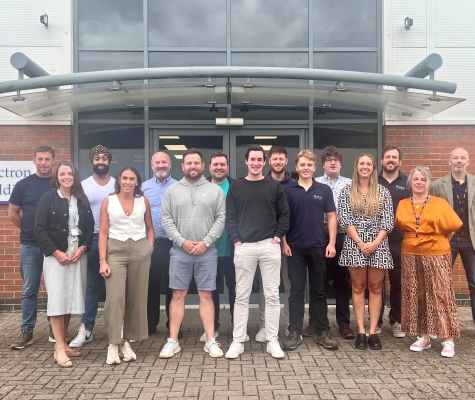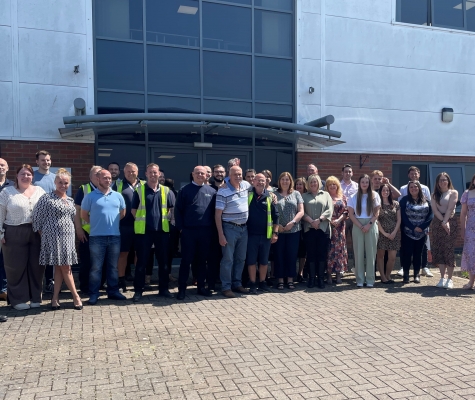One Workshop Won’t Make you an Expert on Ultrasound
Are you finding that an ultrasound isn’t as easy to use as it was in a hands-on-workshop?
Well, you’re not alone. It’s probably not you. And it’s probably not your new ultrasound machine, either.
It’s that workshop you took. The one that showed you how to find nerves or other anatomy using an ultrasound. It seemed so easy when they did it. And in the hands-on session, you felt pretty confident in your abilities.
But then you got home. You bought an ultrasound. And you’re lost.
Don’t fret. This is a common conversation I have with many clinicians out there. The fact is: ultrasound isn’t simple.
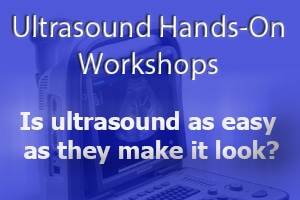
Ultrasound workshops are good, but a 2-hour session won’t make you an expert
Workshops are good, but…
Not too long ago, I spent 4 hours with a bright physician who was very frustrated because she couldn’t identify nerves. Just a few weeks prior, she performed it like a veteran at a SonoSite workshop, but after she received her ultrasound, she was convinced that the machine couldn’t do it properly.
Not too long ago, I spent 4 hours with a bright physician who was very frustrated because she couldn’t identify nerves. Just a few weeks prior, she performed it like a veteran at a SonoSite workshop, but after she received her ultrasound, she was convinced that the machine couldn’t do it properly.
At the same time, she also felt incompetent and/or cheated.

While I encourage physicians to attend workshops to get hands-on training… you must remember to have perspective when you walk away. Remember, at the workshop you have professional, experienced people teaching you what you need to know on a very specific topic; second, there are some things going on behind the scenes that are important to keep in mind, such as:
1. Manufacturers sponsor the workshops
It’s likely you were using the latest and greatest ultrasound machine from a manufacturer. The manufacturer probably had it set up perfectly for the exact exam you’re doing, and it was done by someone with a tremendous amount of experience.
You don’t have that at home. Additionally, your machine probably is not the expensive ultrasound they were showcasing. They’re likely using something that cost in excess of $35,000. And the people operating those machines are professionals who are experienced enough to be qualified to teach it. However, most portable machines purchased by physicians today are priced at $25,000 and less, with the majority falling between $9,000 and $20,000 for a new or refurbished portable ultrasound machine price. And there is a pretty large difference between a $20,000 ultrasound machine and a $35,000+ ultrasound machine!
2. They don’t teach this in medical school
Only in recent years has ultrasound technology been introduced into medical school. Hence, most physicians have not used ultrasound and have a very large learning curve. Although in my experience, physicians tend to have an “aha” moment relatively quickly when using ultrasound.
You’ll need to be patient. Don’t get discouraged. You’ll get it.
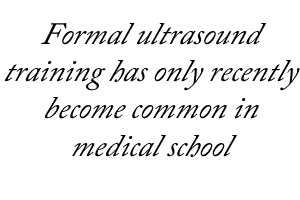
3. Have perspective on the amount you spent
Many sub-$10,000 ultrasound machines provide a very good image but they WILL have problems identifying nerves and superficial structures. If your budget is under $10,000, remember that you’ll need to work a little harder to get the image you want. For beginners, this is often difficult.
4. You don’t have time to practice
This is the final key. Rarely have I met a physician who was able to master ultrasound quickly. It takes practice. Lots of practice.
The Solution: How to master ultrasound quickly
Nothing replaces hands-on experience. Take the time to practice on yourself and really try to identify structures and learn how to manipulate the probe. Be sure to take the following steps to help you along your way.
Read the Manual or get Applications Training
Yes, take a look through the manual so you can get acclimated to the different features of the ultrasound machine. This is important if you don’t get applications training. Oftentimes there are hidden features that can really help you out. It often includes tips on best optimizing the image as well.
We also have free ultrasound training videos on our website that cover a variety of manufacturers. It’s updated with new machines regularly and these are some of the most popular pages on our website.
Phone a Friend
When you get your ultrasound. Take a couple hours to practice. Get a friend or co-worker to sit with you and act as your ultrasound dummy and start scanning. You should remember approximately where you’re looking and where to place the transducer. Start with the general factory presets, then it’s time to start digging in.

Use the technology that you purchased
No matter what machine you purchased, most new ultrasounds have technologies that are under-utilized, such as one-touch optimization, harmonics, and variable frequencies. These are designed to assist you in achieving the best image possible. Your user manual will tell you how to adjust these technologies. Play with them. You can’t hurt the machine by twisting knobs…if you got carried away, go back to the original exam screen and re-select the preset. This will reset all the adjustments you just made to their default settings.
Make Your Job as Easy as Possible
On some machines, the most common mistake is to trust the factory defaults for what you’re scanning. This is particularly true for nerve/MSK/Small Parts/Ortho/Needle presets. Some don’t even have them. But “image quality” and “best image” are subjective. People see things differently and you need to make it good for you.
You need to take matters into your own hands. Take the time to get the machine setup to your liking and you’ll save yourself many hours of frustration. All you have to do is use your eyes and decide what looks good.
Take time to go through my series on image optimization. It doesn’t take long. It’s a step-by-step procedure on getting the best image possible. DO NOT SKIP the part on Dynamic Range and GreyScale Maps. Speaking of which…
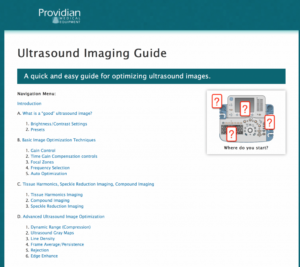
Be Confident!
Workshops are designed to be helpful. They are. And hopefully you now know that you’re not alone if you feel incompetent when you sit in front of a machine on your own. Just remember that you’re using a different machine, and you no longer have an experienced expert showing you what to do. Instead, you’ll need to Google for ultrasound images of the anatomy you’re viewing, which will help guide you.
Feel confident in your abilities and don’t get too frustrated. It takes some time.
